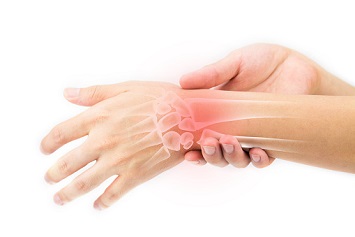Are your workers good with their hands? Very few jobs can be done with no hands. For example, the U.S. military has very specific requirements for enlistees, who are disqualified for most partial finger amputations and any scars, deformations, weaknesses, or paralysis that would prevent them from serving effectively.
 |
|
horillaz / iStock / Getty Images Plus / Getty Images |
It’s important to protect workers’ hands, a task made more difficult by the fact that workers’ hands are the likeliest part of their body to be exposed to workplace hazards like chemical exposures, burns, and moving equipment parts. In addition to these hazards, workers’ hands are often exposed to ergonomic hazards, placing them at risk of disabling injuries to the nerves and soft tissues of the hands and wrist.
Risk Factors
Most ergonomic injuries are the result of cumulative trauma caused by common ergonomic risk factors. While the risk factors are the same, they are generally much smaller in scale and more localized than the types of risk factors that lead to back, neck, and shoulder injuries. It takes less weight and less force to injure the hands and wrists than to injure larger muscle groups and joints.
When you’re working to identify ergonomic hazards that can affect the hands and wrists, look for:
- Forceful exertion. In the hands, this is a matter of the grip strength required to hold a tool or work piece and how long workers have to maintain that grip, together with how frequently they must repeat it.
- Sharp edges. Gripping sharp edges or resting the hand or wrist against sharp edges can damage soft tissues and nerves. If, for example, the worker is repeatedly pressing a hard plastic trigger, the finger can be damaged.
- Awkward postures. For hands and wrists, the most common “awkward posture” is a bent wrist, which places pressure on the nerve sheath entering the hand.
- Vibration. Whole-body vibration typically leads to back pain, but vibration in hand tools or work pieces specifically affects the hands and wrists. In addition to causing damage directly, vibration may increase the grip strength needed to perform a task.
Common Injuries
When the hands and wrists are repeatedly subjected to ergonomic stressors, workers may begin to suffer symptoms of ergonomic injuries, including:
- Carpal tunnel syndrome, an injury to the median nerve in the wrist that can cause weakness, numbness, and clumsiness of the hands. It often results from working with bent wrists for prolonged periods of time.
- Raynaud’s syndrome, also called white finger, in which blood vessel spasms lead to reduced blood flow, cold, and numbness in the extremities. If workers must maintain a forceful grip for long periods or perform it frequently, they’re at risk of developing Raynaud’s syndrome.
- Tendinitis, a term for pain and inflammation of any joint.
- Trigger finger or DeQuervain’s disease, characterized by pain and inflammation. Trigger finger affects the index finger, while DeQuervain’s disease affects the base of the thumb.
- Hand-arm vibration syndrome (HAVS), nerve damage caused by prolonged exposure to vibration.
Injury Prevention
Relieve the ergonomic stressors that can cause hand and wrist injuries by:
- Softening the point of contact. Reduce damaging contact with hard and sharp edges using padding.
- Achieving a neutral wrist posture. A straight wrist is neutral; a bent wrist is subject to potentially damaging pressure. Neutral wrist postures can be achieved by purchasing tools with ergonomic handles and providing wrist rests.
- Resting and stretching. Breaks allow stressed tissues and joints to recover from work stresses, and stretching exercises can Making it easier to hold. Mechanical aids and ergonomically designed, padded, nonslip grips can reduce the grip strength required to hold a tool. Making different sizes of handles available can also reduce the required grip strength. Suspending or counterbalancing tools can reduce the amount of weight that is placed on a worker’s hand and wrist.
- Rotating job tasks. Reduce repeated or prolonged exposures by rotating workers through job tasks with different physical demands throughout the workday.
- Maintaining tools properly. A properly maintained tool will vibrate less and require less grip strength than a poorly maintained tool.
- Providing protective gloves. Vibration-dampening gloves can help to control vibration hazards.
Final Tip: Work gloves can sometimes increase required grip strength if the worker’s hand slides around inside the glove. Make sure gloves can be worn safely for a given task.
